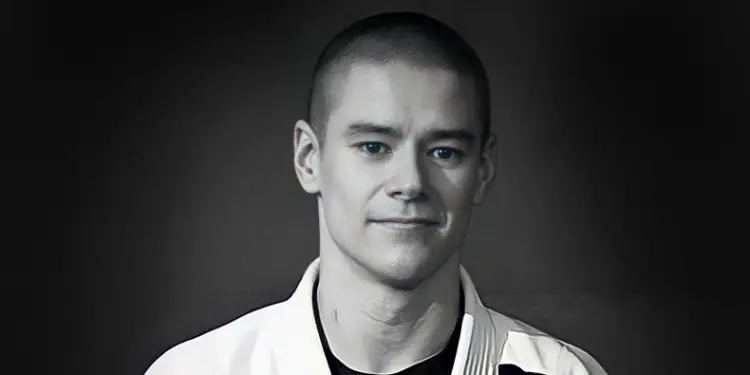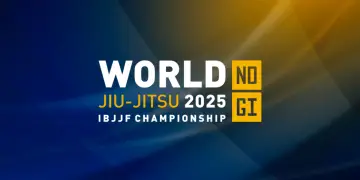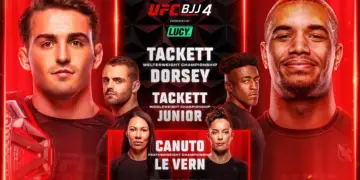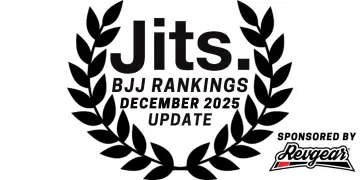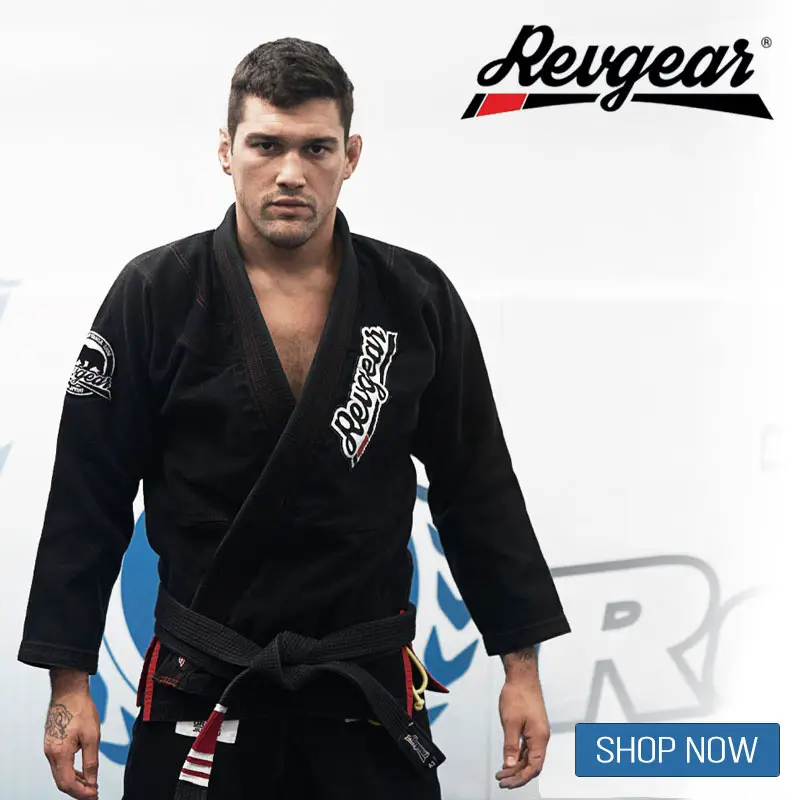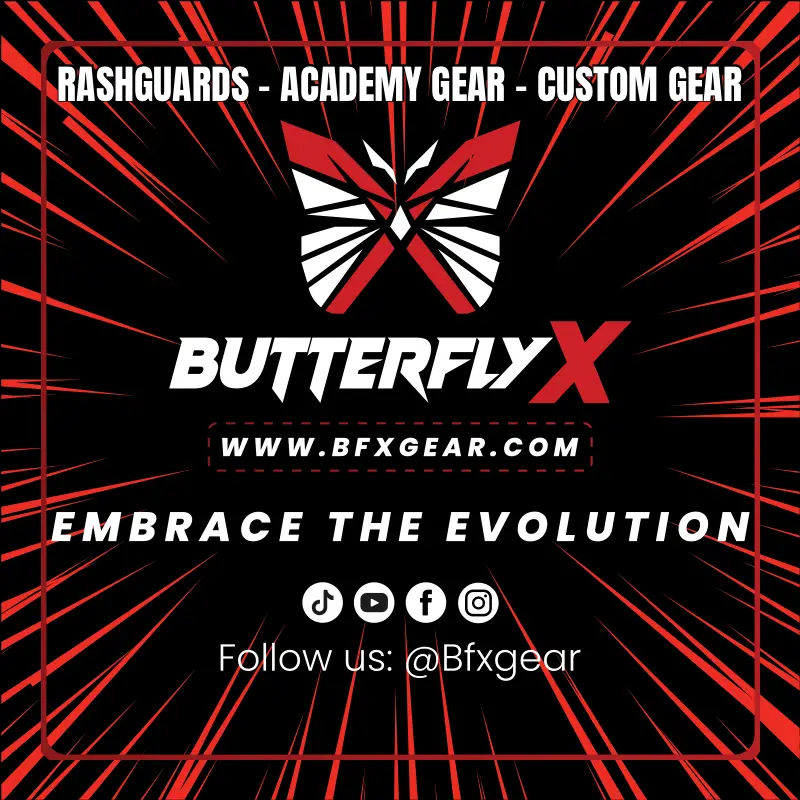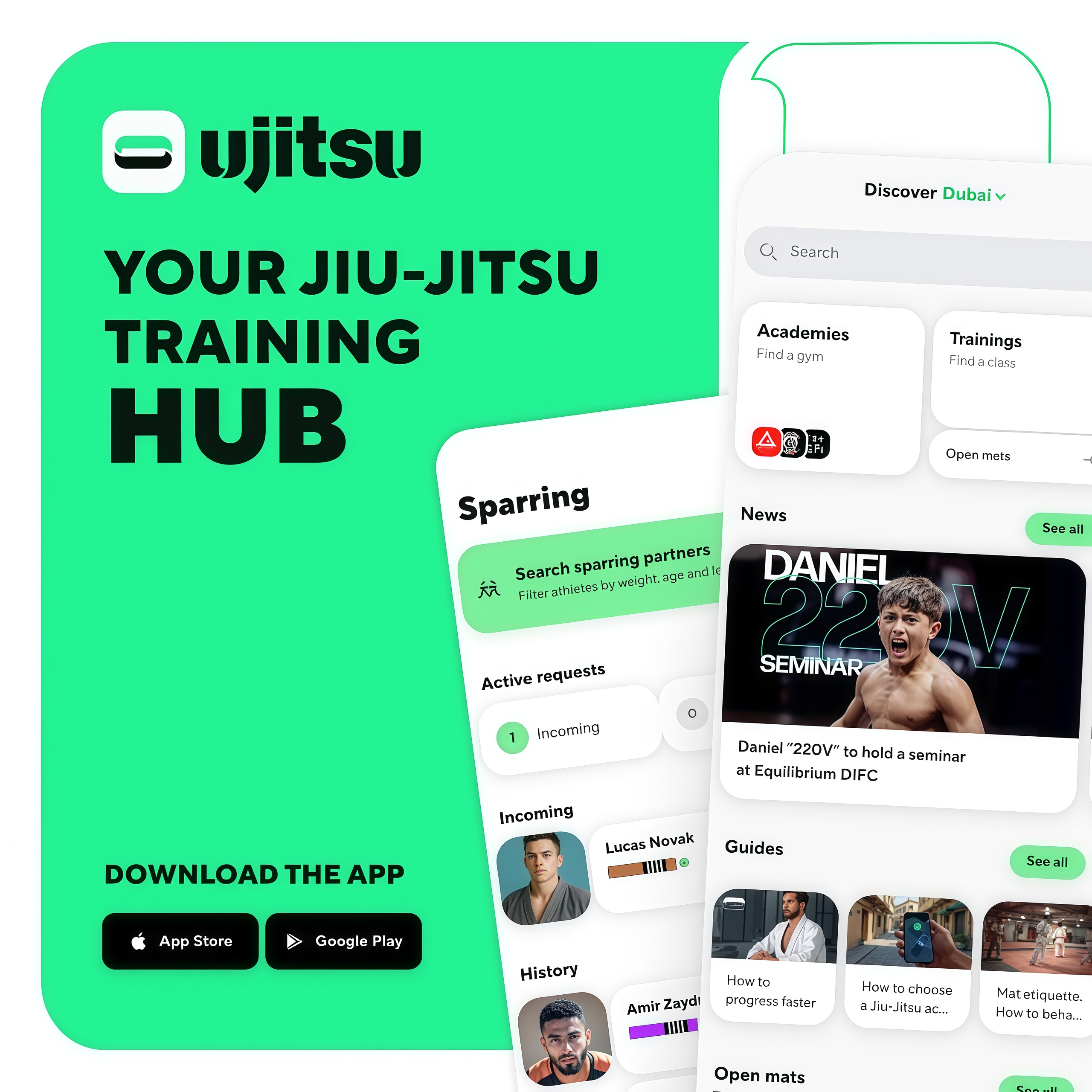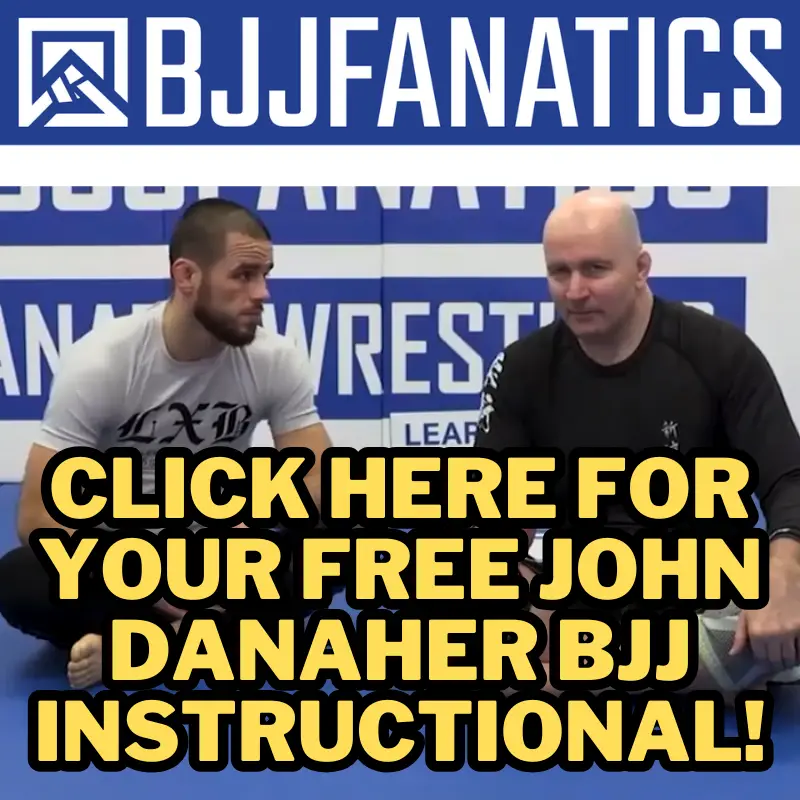Steve Kwan is perhaps best known to the Jiu-Jitsu community as a BJJ black belt under Emily Kwok and the founder of BJJ Mental Models, the world’s leading Jiu-Jitsu education podcast. We were lucky enough to get the chance to sit down with him and our conversation covered several important topics.
Hey Steve, thanks again for doing this. Really happy we could make this work, how are you?
Steve Kwan: Doing good! Happy to be here.
I’ve listened to quite a few of your podcasts and my coach Dave is a big fan as well – he was really stoked to hear I was doing this interview. This is a really fun opportunity for me to get to pick your brain about a few things I’ve been researching.
Steve Kwan: Awesome, what do you want to get into?
So I’m curious about the breakdown service you do. One of the things that really has had me thinking about it is how do you begin to start your breakdown and structure the analysis of the submitted footage?
Steve Kwan: So we have a team of coaches of all different backgrounds and approaches. A lot of the coaches on the team have a lot more coaching experience than I do, so if they have a methodology that works for them, I wouldn’t ever override them. I think that’s really part of the benefit of having a diverse coaching team. You often get a lot of different feedback that you otherwise would miss out on because of the difference in perspectives.
For me personally, the main difference is that when you are watching competition footage that is just floating out there on the internet you are:
- Likely watching it to benefit yourself
(and/or)
- To benefit the broader community (publish your analysis on YouTube, a podcast, etc)
Our approach is watching the footage with the intention of bettering the person who submitted it. So that changes the focus. The person asking for the analysis is the customer so it removes what you, or what a viewership on the internet would want. It’s about what that individual person wants.
The important first step is getting some context from that person. What are they wanting to improve? How did they feel they performed? What was the experience like? What worked vs what didn’t?
Once you have that information the coach can have a pretty good benchmark. Because video footage doesn’t show the entire story – you don’t know what that person was thinking, and often that’s way more important than what they did.
So with that, we get that context, we ask what they were trying to do, provide a self-assessment of their performance and that decides which coach we are going to assign this analysis to.
If they are working on no gi closed guard stuff , maybe the best person to have watch their footage is Brianna Ste-Marie. Or, if they are working on something different maybe it would line up better with Margot Ciccarelli.
Self reflection is always the most important step.
That totally makes sense.
To pivot just a bit, a few years back you were on the Sonny Brown Breakdown podcast and you talked on that show about the gamification of Jiu Jitsu. I believe you used Jon Thomas‘ approach to guard and grip fighting as an example. I’m a big fan of Jon Thomas and I try to use a lot of similar approaches he utilizes in my game.
Do you still think that the approach of gamification of sequential elements in Jiu Jitsu is an effective modality for improvement?
Steve Kwan: Absolutely. I absolutely do. That sort of approach is strongly rooted in ecological dynamics. There’s a lot of reasons to believe that simplifying and gamifying practices lead to better results. There are also a lot of coaches who do this more actively with very good results.
And while I do think it is a good approach, I don’t necessarily think that everyone needs to approach it in the same way. Sometimes people hear these statements and their takeaway is that we “never teach techniques” or that we “never drill” – that simply is not the case. You still have to have a degree of practice, but what the gamification side of things allows you to do is to create an environment that allows one to explore and solve problems on their own.
Instead of telling someone what the answer is – which isn’t a very sticky way to learn: you put them in an environment where they find the answer on their own. You can even put guide rails in place to ensure they eventually find the answer on their own with that approach.
The goal is to get further away from prescribing people what to do and more so helping them figure it out on their own.
Okay I’m following. So I see how that tracks back to the first question with the analysis.
So let’s say a competitor reaches out to you and asks for some feedback on their footage from a tournament. And maybe the thing they are wanting to improve upon in their performance does not appear to you as the glaring problem that needs addressing. How do you tailor your analysis when that sort of conflict arises?
Steve Kwan: So there’s a few factors there. The first factor is that the single most important factor for coaching is finding the right coach. Often it won’t be me. So if someone came to us for example from ADCC it would go to a coach that has experience at ADCC.
To answer the question about the disagreement of the problem. I never want to assume I know better than the person coming to us and asking for the analysis. Everyone knows their own game better than anyone else. You could be a black belt in Jiu Jitsu but you aren’t a black belt in my game – you don’t know what I’m thinking when I do the things I do.
So if someone says something and they have a goal for the feedback, I’ll share my opinion but I’ll also give them the benefit of the doubt and answer their specific question they are coming to me with.
However, I might try and clarify by letting them know they might be asking the wrong question and then providing the correct answer to that question. That way they end up with the best of both worlds.
Gotcha – that totally makes sense to me. I think that leads into something I have heard you talk about quite a bit which is deliberate practice. Not just showing up and training without specific goals in mind and just freestyling each training session.
How do you package the opportunities for improvement after the analysis?
Steve Kwan: So I think it depends on the context of what their goals are. If the footage is a class roll or a competition roll – that’s going to change a lot of things. Interestingly, the most useful thing to get feedback on is classroom casual sparring.
Oh wow. I wouldn’t have guessed that.
Steve Kwan: Oh yeah. It’s not about doing the perfect analysis. It’s about doing a lot of analysis. The problem is that there are only so many competitions. Most people, especially hobbyists, are going to have a very small amount of competition footage that they can submit to us. Whereas anyone can turn on their phone and record a rolling session. If you do that once every few weeks you might see way bigger results than if you wait for feedback after competition.
That’s actually the main thing that people make mistakes with. People wait too long to request feedback. If you request feedback after a competition, you kind of missed the best window. The better window might be to submit some of your gym rolls, find the problems, and then fix those before you go into competition.
I think that all ties into what you mentioned at the beginning which is mindful, deliberate training. Going into class with a goal in mind. If a coach identifies a weakness, then you’ve identified what your goal is in your next sessions to improve upon it.
Okay wow, okay. I’m seeing how it all comes together that way. Hearing that makes me wonder – are there things you wish more people did when they were recording rolls to submit to you? Either before or during the rolls themselves?
Steve Kwan: The main thing is a short, tight, repeating feedback loop. A lot of people think they should package up a big 20 minute video and send that in every 6 months – that’s not going to give you very good results.
You want to send in shorter, precise videos on a rapid basis. Very short, 3-5 minute videos that are submitted often are better than sending giant videos. It’s also a lot harder for coaches to provide analysis on a 20 minute roll.
That adds up. You guys have been doing this service for a while correct?
Steve Kwan: Yeah I think it’s been about 4 or 5 years now at this point.
Do you think the way you have prescribed process improvement programming for submitters to improve has changed dramatically in the last four years or has it remained relatively the same?
Steve Kwan: So I think it depends. For instance, if we watch someone and it comes up that the person’s technique looks fine but they hesitate and aren’t pulling the trigger fast enough – that’s more of an indicator of a mindset type thing.
You’ll end up giving more mindset type advice and feedback rather than a technique correction. It’s honestly all really dependent on the individual. No two reviews we do are the same, it’s very much a bespoke, custom response for each video submission. It’s almost like paying a high level grappler to make an instructional for you about your specific question you are asking for your game.
I hadn’t thought about it like that before, but responses in line with that instructional analogy sounds like a really effective solution.
Steve Kwan: And traditional instructionals are great too, but the problem is that it’s the same instructional for everyone. The problems one person is experiencing and trying to solve with an instructional won’t shine through the same way as something that is custom to their specific situation. You get the feedback that you need depending on your goals, game, and body type.
It’s funny you say that. I’ve probably spent an embarrassing amount of money on instructionals and it’s very much like that – more so an à la carte experience where I pick and choose what is relevant to what I do.
Steve Kwan: Right.
And I think it often ends up being a bit wasteful or just not the most efficient way of adding tools or finding solutions to problems I run into on the path to improving my game into a more cohesive structure.
Steve Kwan: This is a problem I think a lot of grapplers run into. People think that when it comes to instructionals that more always equals better. And I don’t think that’s the case. We all feel this constant pressure to absorb and study everything. So many people spend a tremendous amount of money trying to buy all these different instructionals that they might not even watch all the way through. And often the instructionals end up not being as useful as they initially thought they would.
Whereas if you could get Margot Ciccarelli to cut you a twenty minute video on exactly what you are doing wrong and how you could improve upon it… I mean isn’t that a better use of everyone’s time and money?
Well when you put it like that it honestly sounds a bit silly to do it differently. It’s definitely more efficient. I honestly hadn’t thought about the benefits to pursuing more customized content but this conversation definitely has me re-evaluating that. I really like the approach.
Steve Kwan: I love the approach too. Because it also helps athletes and coaches build a better relationship with each other. There aren’t very many ways to earn a living in Jiu Jitsu yet, so the fact that we can connect people to coaches and get these coaches paid is really one of my favorite parts of all of this. Helping people improve their Jiu Jitsu while also helping these coaches get paid, and achieve a better level of career sustainability.
Okay, two more questions and I’ll let you go, I know we are closing in on our time window.
What is something you are especially excited about in this sphere of training modalities, learning strategies and coaching tools?
Steve Kwan: Well you mentioned it at the very beginning, but I think ecological dynamics and gamification. To me, I think this is a very exciting element of Jiu Jitsu coaching development. Improving Jiu Jitsu, keeping it playful. That whole move to bring in these coaching best practices like ecological dynamics, and coaching lessons from sports like wrestling into Jiu Jitsu – that’s what I am really excited about.
Yeah I think it’s fascinating and I’m taking all these notes as we’re talking for things I’m now going to want to research on a deeper level in terms of the actual structure of the frameworks.
My last question is a bit cheesy but I’m really interested to hear your answer – if you could have anyone you want on the podcast that you haven’t spoken to yet, who would you pick for that episode?
Steve Kwan: Oh boy.
That’s honestly a really difficult question…
I think that, in my experience, the topic is almost always more important than the guest. We’ve had a lot of really good high-level people on the podcast, and the numbers would surprise you compared to episodes where we had people on that you likely have never heard of, but the topic we covered was exciting enough to compete with it. Our episode on skin care for Jiu Jitsu with Dr. Clayton Green did phenomenally well and I think that’s a really good example of that.
That said, if I absolutely had to choose someone that hasn’t been on before – it would be Josh Waitzkin (American Chess prodigy, BJJ black belt under Marcelo Garcia, and co-founder of MG in action).
Oh wow. Good answer.
I’m looking at the time and I see that we’ve just gone over. I really appreciate all the time you have given me today for us to have this conversation. I really enjoyed it.
Steve Kwan: Glad to do it – thanks for having me!
You can find more with Steve Kwan on the official Instagram of BJJ Mental Models, and on the BJJ Mental Models podcast that is available on Spotify, Apple, Amazon, and Google Podcasts.
To submit a video for analysis you can visit the BJJ Mental Models website here.


